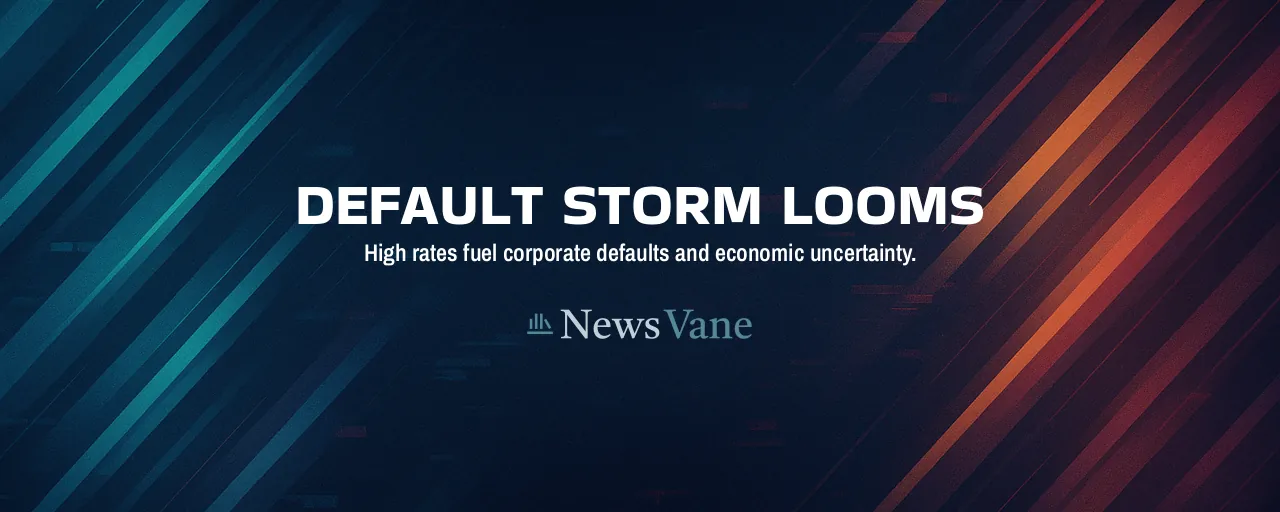A Mounting Financial Burden
A mid-sized retailer in Texas sees its loan payments climb each quarter. This reality is hitting many U.S. companies as the Federal Reserve keeps interest rates near 4.5 percent. Deutsche Bank strategists project that speculative-grade corporate defaults could reach 5.5 percent by mid-2026, a peak not seen since 2012. The fallout could affect jobs, investors, and entire communities.
Inflation, still at 3.3 percent in early 2025, drives the Fed's stance. Though down from 9 percent in mid-2022, it exceeds the 2 percent target. Companies with lower credit ratings face refinancing at rates between 6 and 7.6 percent, straining their budgets. The pressure is real, and the stakes are high for businesses trying to stay afloat.
Many firms are dodging bankruptcy through distressed debt exchanges, renegotiating terms with creditors. These deals accounted for over 65 percent of default events in 2024, up sharply from pre-pandemic years. Yet with economic uncertainty rising, businesses face a tough question: how long can they hold on?
The Argument for Staying Tough
Some economists emphasize that high rates are critical for long-term stability. They note that core PCE inflation dropped from 5.4 percent in early 2022 to 2.7 percent by early 2025, showing progress. Government borrowing costs remain manageable, with ten-year Treasury yields below nominal GDP growth, reducing the risk of a fiscal crisis even as some firms refinance at higher rates.
This view echoes the 1980s, when Federal Reserve Chair Paul Volcker raised rates sharply to curb inflation. That strategy worked, bringing inflation from 14 percent in 1980 to under 4 percent by 1983. Supporters argue that accepting temporary corporate challenges today prevents a future where inflation spirals, hurting consumers and savers alike.
Calls for a Softer Approach
Others warn that prolonged high rates could stall the economy. Economists favoring earlier rate cuts point to declining business activity. In April 2025, 45 percent of U.S. firms reduced capital spending, and 40 percent cut hiring, citing uncertainty over Fed policy and potential tariffs. These trends signal risks to jobs and growth.
Historical examples, like the New Deal and post-2008 recovery, show the value of combining monetary easing with fiscal support. Advocates today propose measures such as wage subsidies or expanded unemployment benefits to help firms, especially in sectors like commercial real estate, manage high borrowing costs without widespread layoffs.
Wider Economic Impacts
High rates reverberate globally. By late 2024, global nonfinancial corporate debt reached $75 trillion, with a third due by 2027 at elevated yields. U.S. rate hikes have historically sparked crises, from Latin America in 1982 to Asia in 1997. Today, emerging markets struggle with costlier dollar-denominated debt, raising risks of defaults.
In the U.S., speculative-grade firms face the greatest pressure. S&P Global forecasts default rates could hit 6 percent by late 2026 if tariffs and uncertainty squeeze profits. Moody's warns that 40 percent of non-investment grade debt could be at risk, particularly for mid-sized companies facing high-yield bond rates above 6 percent.
A Tightrope for Policymakers
The Fed navigates a complex landscape. Inflation, fueled by housing costs up 4.8 percent and core services at 3.7 percent, demands caution. But high rates could slow GDP growth by 0.4 percentage points per quarter as firms delay investment amid tariff and regulatory uncertainty. The trade-offs are stark and the path forward uncertain.
For everyday people, the consequences are clear. Rising defaults could lead to job losses, and consumer confidence, already down over 4 percent in uncertain times, may weaken further. Yet unchecked inflation could erode purchasing power, hitting vulnerable households hardest. The Fed's decisions will shape the economy's trajectory.
Businesses, workers, and policymakers face a challenging road. The Fed weighs inflation control against growth, while companies adapt to higher costs. As the economy balances on this edge, the choices made now will determine whether stability prevails or strain takes over.
